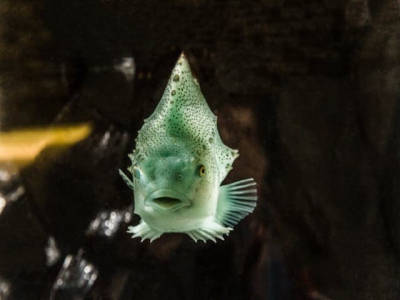How to improve cleaner fish efficacy

Good feed and the right environment during their hatchery phase are key for lumpfish to be effective as cleaner fish in salmon farms once transferred to sea.
Despite being sociable, lumpfish need space to rest on the walls of the hatchery tanks. Photo: © Rama Bangera, Nofima
Those running lumpfish hatcheries must therefore know what the fish need to thrive, grow and stay healthy – basically: the right feed, enough space, good water quality and minimum stress – according to the latest research from Nofima.
The Nofima-led Rensvel project aims to fine-tune this by finding new ways of gauging cleaner fish welfare and establishing exactly what they need to thrive and stay healthy. It has been claimed that lumpfish that grow rapidly become aggressive and “bully” smaller fish. Lumpfish are therefore usually graded by size many times before being transferred to pens in the sea. However, the project has shown that ungraded lumpfish can live close to their neighbours without any bullying – as long as there is sufficient feed available.
“To avoid bigger fish bullying the smaller ones, there must be enough feed for everyone. In addition, the feed pellets must be large enough for the largest lumpfish and small enough for the smallest,” explains Nofima senior scientist Ingrid Lein.
Crowding is not a problem in itself, as long as the fish get enough of the right food, can find a place to rest and have good water quality.
“Lumpfish are social, thrive in groups, and are not plagued by disease,” says Lein.
Access to food is important. Lumpfish are not strong swimmers and need to rest. They do this by attaching themselves to the tank wall using a ventral suction plate.
“Because lumpfish like to sit on the tank wall and are not fast swimmers, feed needs to fall down near the tank walls. Most commercial farms use dispensers located in the centre of large tanks, which may be too far away for young lumpfish,” says Lein.
Lumpfish like clean, well-oxygenated, fast-moving water. Because they need to rest every now and again, it is important to provide enough space in the tank for all the fish to be able to find a place to rest.
Nofima has been running the project in collaboration with Nord University, the Norwegian Institute of Marine Research, the Norwegian University of Life Sciences (NMBU), and the Norwegian University of Science and Technology (NTNU). The Rensvel project is financed by the Norwegian Seafood Research Fund (FHF).
Related news
 Fish disease guide - White Spot Disease
Fish disease guide - White Spot Disease White spot is a contagious parasitic disease of fish. Caused by Ichyophthirius multifilis, the parasite infects the fish after moving from the bottom of the pon
 Salt shown to improve arapaima farms
Salt shown to improve arapaima farms Brazilian researchers have shown that the growth and survival of Arapaima gigas larvae can be improved by adding salt to hatchery water.
 Fish processing by-product may provide prebiotic, boost growth
Fish processing by-product may provide prebiotic, boost growth Adding a fish processing waste-derived by-product to farmed catfish diets may boost fish growth, performance and generate a prebiotic effect, say researchers.